BUYER'S BRIEF
From fastest selling new Vauxhall of all time to rare classic, here’s how to buy the very best example you can…

Handsome Viva could be had in both two-and four-door saloon and as a three-door estate.
Why you want one
This really is one extremely rare slice of Seventies British car culture. When the third generation Viva was launched at the outset of the decade, Vauxhall stuck its flag firmly in the soil and boasted of a £3m investment in what it named ‘Punishment Park’ – otherwise known as the now iconic 700-acre proving ground at Millbrook. The company’s launch brochure declared proudly that its new saloon had been given ‘all it could take – and more’ at the Bedfordshire site. Indeed, the Viva was a tough car, with its tried and tested engines and steel said to be ’28 percent thicker than major rivals.’ Just not tough enough to survive in large numbers, despite 640,863 examples rolling off the production lines at Luton and Ellesmere Port.
Pickings are slim indeed. The 1970 range started with the handsome but basic two-door Viva with its OHV 1159cc engine (1256cc from 1971), drum brakes (discs optional) and black vinyl seats. The two-door de Luxe model got coachlines, ‘Vynide’ upholstery, door pull armrests and servo assisted brakes, while the altogether fancier SL came with extra trim and fluffinside, plus the option of a 1599cc OHC lump (upgraded to an 1759cc unit from 1972). You could have your De Luxe and SL in four door and estate body styles. From 1971, the Firenza coupé began stealing sales from the Capri and Marina Coupé – thanks in part to its 2-litre twin-carb engine from the HB Viva GT.
Vauxhall split the range in 1973, with the 1300 models keeping the Viva badge, and the 1759cc engine and a 2.3-litre becoming the luxurious Magnum, with seven dials replacing the Viva’s strip speedo (the 2.3-litre version of the Viva SL got those dials too). All models were fitted with front discs, while the Firenza got its fabled ‘droop snoot’ nose. Over time, the range continued to evolve, with the base spec car later known simply as ‘E’ in the mid-Seventies (the only model to retain the strip speedo), while the ‘L’ (with its twin dial instrumentation) took up the mid-spec area of the line-up and the Viva GLS (replacing the SL) topped it off with the seven-dial dash, quad headlamps and comfy, reclining velour seats. Losing sales to the likes of VW’s Golf, the Viva left showrooms in late 1979, ahead of the Astra’s launch in March 1980.
MARKET ANALYSIS
Unless you find one that’s complete, beware of barn finds and basket cases. Regardless of how good you are at fabricating metal, you’ll need to work extremely hard to find all the missing bits on a Viva or Magnum. It’s inevitable that prices are edging upwards. The HC remains good value though, and while there’s little price difference between two/four doors and estates, you are likely to pay a little more for one with the bigger engines – including the rare Firenza, which is sought after. That said, a 1971 four-door Viva went for £6k at Barons in September 2024 – a grand more than a Magnum estate went for a month earlier at Anglia Car Auctions – while a late 1300 GLS sold for £8200 at ACA last summer. We noted a few unsold examples at auction, while a deliciously basic Viva E went for just £2k at Mathewsons.
ENGINE
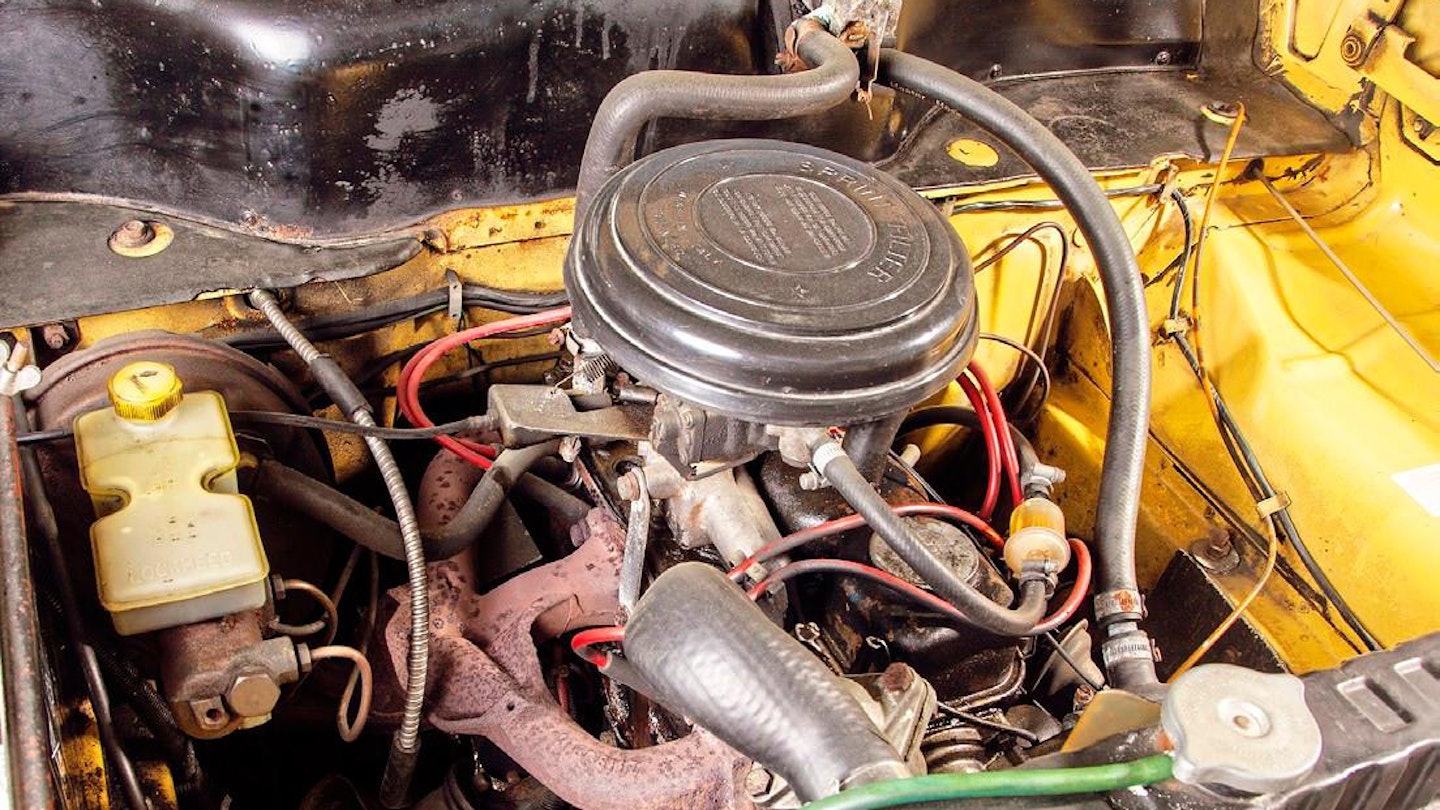
Simple and easy to maintain, but ask about cambelt changes on the OHC engines. Later engines can also suffer from cam cover oil leaks.
BODY
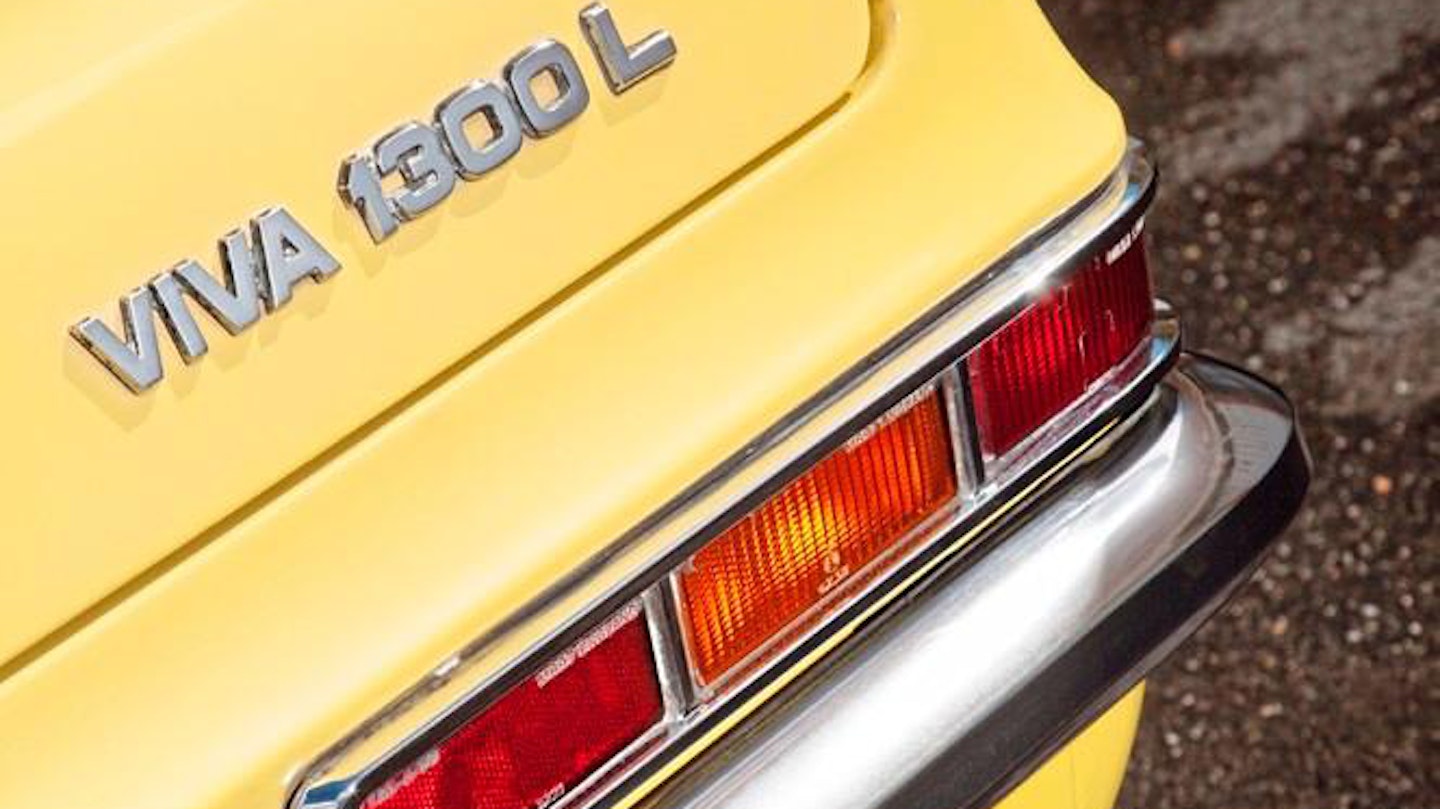
Check inner front wings around the suspension turrets and bonnet hinges, outer front wings, rear wheelarches as they corrode near the sills, and the B-pillars.
CABIN
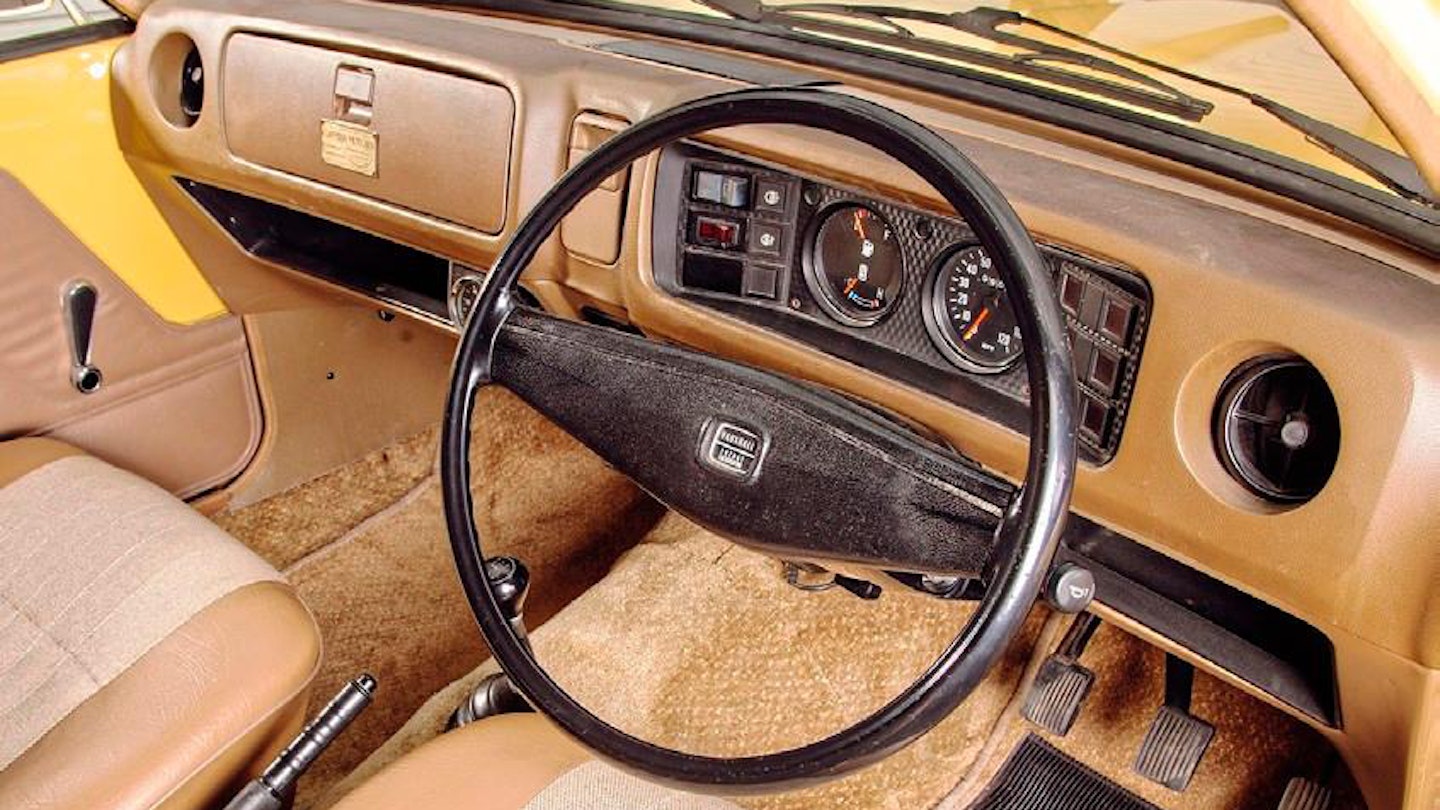
Simple cabin is comfy but trim impossible to source, so make sure the car you’re looking at is complete as possible inside.
The inspection
That it’s easier to find spares for high performance exotic supercars these days is no exaggeration. Anything from headlights to dash switches are hard to find. The owner’s club is likely to be the best source of advice, so we’d encourage you to join up. Replacement panels for the Viva are getting scarce, (wings can be worth £500 plus) so check your prospective purchase very carefully. You may be relying on new/old stock or used items. Inner front wings rot around the suspension turrets and bonnet hinges. The outer front wings tend to rot around the bottom where mud collects. Inspect rear wheelarches as they corrode near the sills, as do B-pillars. Pay particular attention to the screen surrounds and A-pillars as bubbling here could turn into a major headache. Check every panel very carefully for signs of corrosion. You’ll also want to get underneath, as the floorpan is prone to rust. See also the boot floor and suspension mounting points. The top mountings for the rear shock absorbers can be especially problematic, so don’t rely on a cursory glance as repairs in this area are tricky.
All engines are DIY-friendly, with good parts availability. Listen for excessive tappet noise on OHV engines – valve-gear breakage can occur if it’s left unchecked – and you should also inquire when an OHC unit last had its cambelt changed. A snapped belt won’t lead to engine damage, but it’s a good indicator of general maintenance. These latter engines can also suffer from niggling oil leaks, with the cam cover gasket being a particular issue. Broken oil pumps aren’t unheard of either. Cooling systems could have degraded, so check the condition of the coolant and hoses, while lumpy running is likely to be a carburettor or distributor that’s ready for an overhaul. Otherwise, a record of diligent maintenance – oil changes every 3000 miles are recommended – should be all that’s needed to keep an HC’s engine running sweetly.
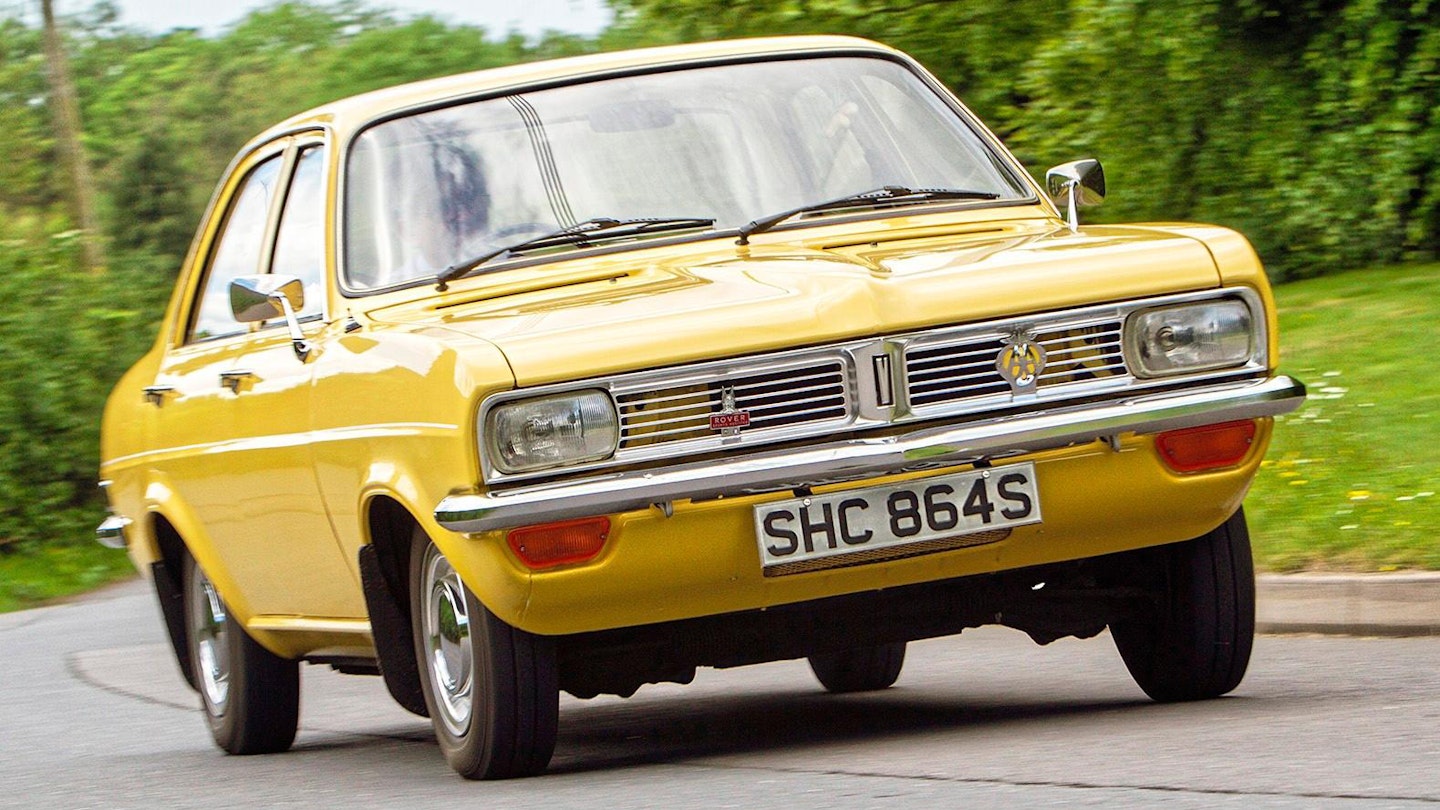
Taught handling is a Viva attribute.
The manual gearbox was a four-speeder – if it’s going to wear, it’ll be the second gear synchromesh that goes first. Any whines or crunches need further investigation, but it’s trouble-free otherwise. The GM three-speed autobox just needs checking for jerky shifts or signs of burnt or treacly fluid. A slight whine from the differential is unlikely to signal imminent failure, but look for any evidence of oil leaks.
The sheer simplicity of the HC’s running gear means that checking the steering, brakes and suspension is straightforward. And, unless the example you’re looking at has been completely neglected, general wear and tear is likely to be the extent of any problems. Check the condition of the front wishbone bushes as these can wear prematurely, although replacements are cheap; the same goes for the bushes that locate the rear axle. Tired springs and dampers should be easy to spot on a test drive, but you shouldn’t have much trouble tracking down a new set.
You can buy Escort interior parts on every street corner, but good luck sourcing decent Viva interior trim. It can involve a lot of searching, so make use of your newfound friendships in the club. The vinyl trim is quite hard-wearing, and any damage can be dealt with easily by a professional trimmer or a capable DIYer. The later cloth is altogether harder to find. More problematic is cracking of the dashboard moulding. Better news is the fact your Viva won’t be too difficult to work on, whether you’re refurbishing the engine or stripping and repairing an interior. Ownership of any classic Vauxhall is going to be more of a challenge than it is for the owner of a Ford or BL car, but the reward is exclusivity. What was once street furniture is now more exotic than any 200mph hypercar. Join the club, find your Viva and let the nostalgia begin!
WHAT TO PAY
PROJECT £750
GOOD £3000-£5000
EXCELLENT £5000-£9000
WHAT IT’S LIKE TO OWN
James Walshe looks at what Viva HC life has in store for you…
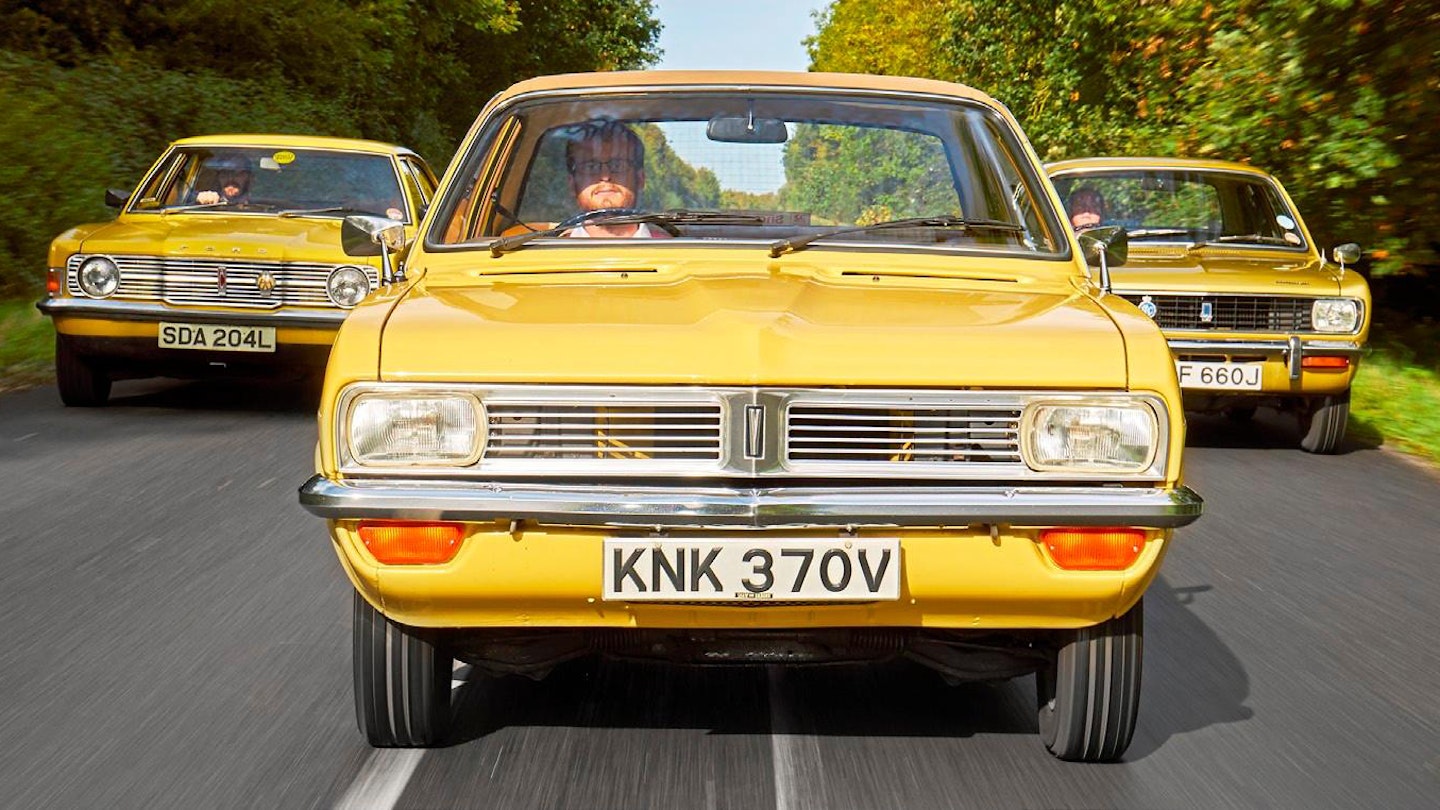
Leader of the pack, reckons our Maz.
Every street in every town – Vivas were a common sight in the Eighties… gradually vanishing in the decade that followed. As our road-testing supremo John Simister pointed out when he drove a Viva HC in a Practical Classics group test, it was very much part of Britain’s new breed of family cars for the Seventies, with a look and style all its own. John says the HC was a cut above the Cortina and Avenger in many ways. ‘The Viva’s shift is precise and on test, proved to have the speediest steering response of the three cars driven that day. It turned instantly, generating little body roll, although the downside of that tautness in the bends is a choppy ride.’ Maz Hopley is chairman of the Viva Owners Club and has cherished numerous examples since the age of 18. ‘I’ve never known anything but Vivas! As a Sixties kid, my parents had a Viva HB when I was born and in 1978 traded in for an HC, at a cost of £1999. I own that car today and it’s very much part of me.’ Maz’s Viva is currently undergoing a full restoration – an effort he says is generally quite challenging these days. ‘There has to be a ‘make do and mend’ approach to looking after the Viva. If you can find HC wings, you’re often looking at more than £500 per side! Joining the club is definitely beneficial, as we do everything we can to help fellow members.'
USEFUL CONTACTS
Vauxhall Viva Owners Club, vauxhallviva.com
Vauxhall Green Parts, vauxhallgreenparts.co.uk
Subscribe to a PC Print+ Subscription today and you'll get instant digital access PLUS FREE UK delivery so you'll never miss an issue again. Check out our offers today.
